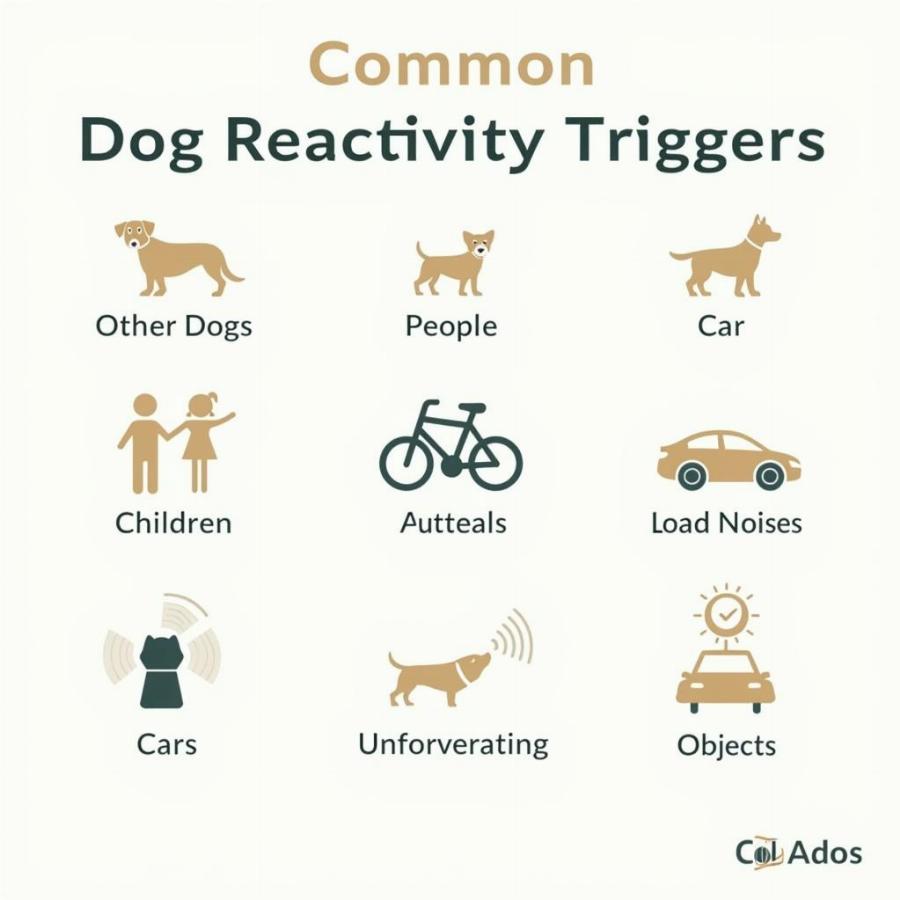Does your heart race when you see someone walking their dog across the street? Does every walk feel like navigating a minefield of potential “triggers”? If your reactive dog is causing stress and impacting your daily life, know that you’re not alone. Many dog owners struggle with reactivity, but with understanding, patience, and a solid plan, you can navigate this challenge and build a more peaceful life together.
Understanding Canine Reactivity
First, it’s important to understand what’s happening beneath the surface. “Reactivity” describes a dog’s exaggerated response to specific triggers. These triggers might be other dogs, people, noises, or even certain environments. A reactive dog might bark, lunge, growl, or whine in an attempt to increase distance from the perceived threat.
Importantly, reactivity is rooted in fear, anxiety, or frustration. It’s not about dominance or bad behavior, but rather a way for your dog to communicate discomfort and attempt to control their environment.
Identifying Your Dog’s Triggers
The first step towards managing reactivity is pinpointing what makes your dog tick (and bark!). Keep a detailed journal of:
- Specific Triggers: Are they reactive to all dogs or just certain breeds? Do they react differently to men, women, or children?
- Distance: At what point does your dog start reacting?
- Environment: Are they more reactive in specific locations, like the dog park or on walks?
- Time of Day: Are there certain times when your dog seems more on edge?
 Dog reactivity triggers illustrated
Dog reactivity triggers illustrated
Creating a Management Plan: Steps to Take Today
Remember, managing reactivity is a marathon, not a sprint. Here are some key strategies:
1. Consult Professionals
Seek guidance from a certified dog trainer or veterinary behaviorist. They can help you develop a tailored training plan based on your dog’s specific needs and provide valuable support along the way.
2. Safety First: Muzzle Training
Muzzle training isn’t about punishment; it’s about safety. A properly fitted muzzle prevents bites and allows you to work with your dog without putting them or others at risk.
Expert Insight:
“Desensitizing a reactive dog takes time and consistency. Muzzle training provides peace of mind and allows for safe exposure to triggers during training.” – Sarah Williams, Certified Dog Trainer
3. Counter-Conditioning and Desensitization
These techniques involve changing your dog’s emotional response to triggers. Gradually expose your dog to the trigger at a distance where they remain calm. Pair the appearance of the trigger with something positive, like high-value treats or toys.
Example:
If your dog reacts to other dogs, start by having a friend with a calm dog stand at a significant distance. As soon as your dog notices the other dog, reward them with praise and treats. Gradually decrease the distance over time.
4. Enrichment and Engagement
A well-exercised and mentally stimulated dog is less likely to be reactive. Provide plenty of physical exercise, engage in interactive games, and consider puzzle toys to keep your dog’s mind sharp.
5. Body Language Awareness
Learn to read your dog’s signals. Early signs of stress might be subtle, like yawning, lip licking, or a tucked tail. Recognizing these signs allows you to redirect your dog’s attention before a reaction occurs.
Building a Supportive Environment
Managing reactivity isn’t just about training; it’s about creating a supportive environment for your dog:
- Avoid Punishment: Scolding or punishing your dog will only increase their fear and anxiety, making reactivity worse.
- Advocate for Your Dog: If someone is approaching too quickly, politely ask them to give your dog space.
- Manage Your Energy: Dogs pick up on our emotions. Stay calm and assertive, projecting confidence to your dog.
- Celebrate Small Victories: Progress might be gradual, so celebrate even the smallest wins. Every calm interaction is a step in the right direction.
Living with a Reactive Dog: You’re Not Alone
Living with a reactive dog can be challenging, but it’s not impossible. Remember to be patient, kind to yourself and your dog, and seek professional guidance. With dedication and consistent effort, you can help your dog feel safer and build a more harmonious life together.
FAQs About Reactive Dogs:
Q: Will my reactive dog ever be “cured”?
A: While reactivity is manageable, it might not fully disappear. The goal is to help your dog feel more comfortable and confident in triggering situations.
Q: Can I still take my reactive dog to the dog park?
A: It’s generally not recommended to take a reactive dog to a dog park, as the uncontrolled environment can be overwhelming and potentially dangerous.
Q: Is my dog aggressive?
A: Reactivity is often rooted in fear or anxiety, not aggression. It’s essential to understand the difference and work with a professional to address the underlying emotions.
Looking for More Help?
For more insights on dog reactivity, training tips, and support, explore these related articles on Beaut Dogs:
- [Link to article about muzzle training]
- [Link to article about counter-conditioning techniques]
- [Link to article about dog body language]
Beaut Dogs is your trusted source for all things dog-related. We provide reliable, practical information to help you navigate the joys and challenges of dog ownership. For personalized support and guidance, contact us at [email protected]. Let Beaut Dogs help you and your furry friend thrive!